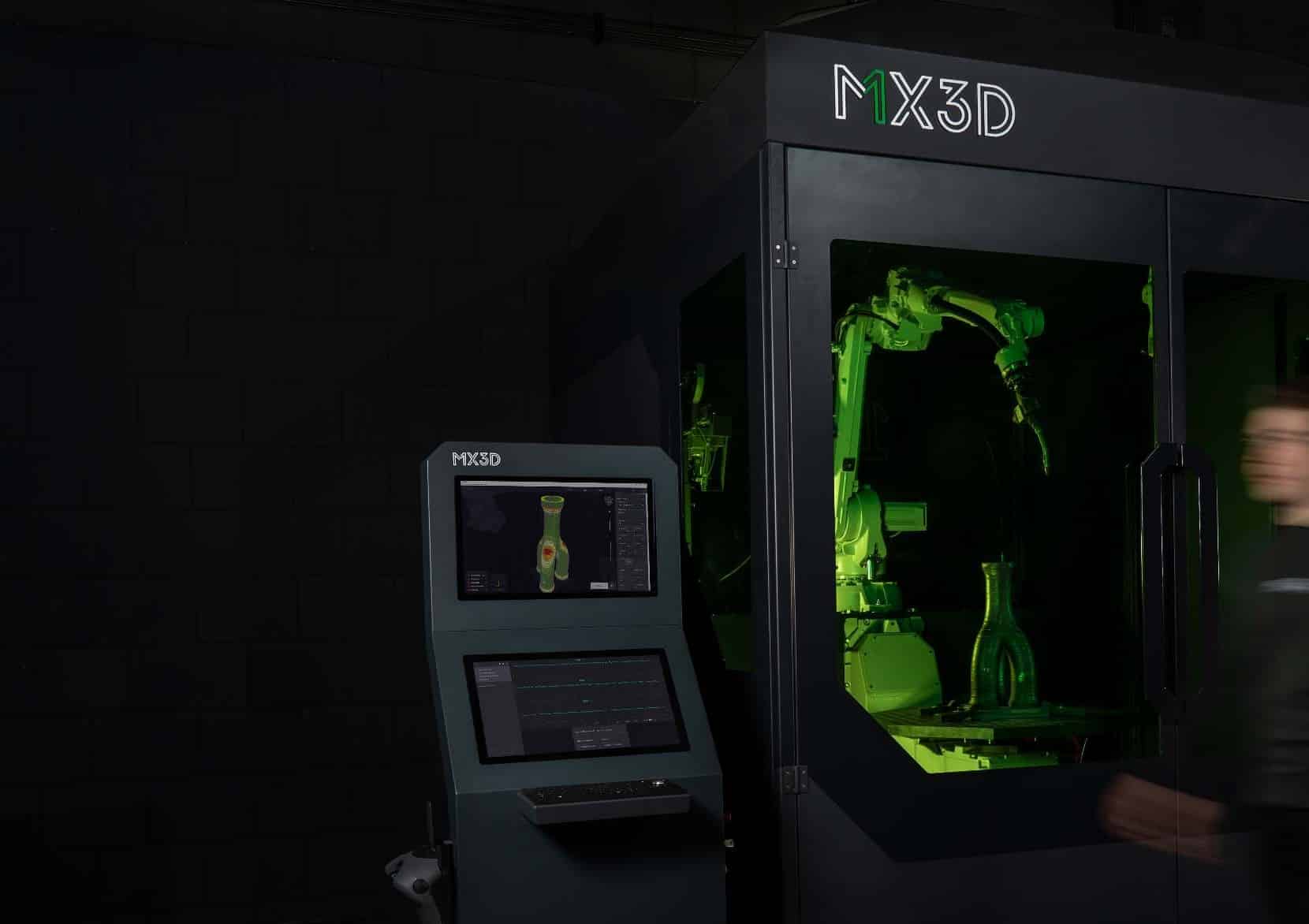Wire Arc Additive Manufacturing (WAAM)

Wire Arc Additive Manufacturing (WAAM) is probably the least talked about of various additive manufacturing (AM) processes. WAAM is a variation of a Direct Energy Deposition AM technology that is based on an arc welding process to print metal parts in 3D. Compared to the more common metal powder AM processes, WAAM is more capable of creating larger components by melting metal wire via an electric arc creating higher material throughput. The process is combined with a robotic arm to create shapes built on a substrate material from which the part must be removed when complete.
The development of WAAM is being driven by the need for increased manufacturing efficiency of engineering structures. Its ability to produce very near net shape preforms without the need for complex tooling, moulds or dies offers an array of benefits for companies, which include significant cost and lead time reductions, increased material efficiency and improved component performance.
Use and benefits of wire arc additive manufacturing for industries
As previously mentioned, WAAM is particularly good in the manufacture of metal parts in large-scale. Compared to laser powder bed fusion AM machines, the robotic arm of a WAAM machine has greater freedom of movement, implying that the size of a part is not so restricted by space, depending mainly on the distance the robotic arm can reach. Robot arms can indeed be very large, although another option may be to use multiple WAAM robots on a single part if required.
When it comes to the cost of materials, the welding wire used in the WAAM printing process is significantly cheaper compared to other metal AM processes. This is principally because WAAM technology is based on welding, a well-established manufacturing technology. WAAM hardware usually consists of off-the-shelf welding tools, which helps keep the system cost down. Furthermore, wire is typically easier to handle. Metal parts manufactured with WAAM are particularly notable for their high density and strong mechanical properties, which compare favorably to parts manufactured using conventional manufacturing techniques. Since wire feedstock is a 100 per cent dense input material, there is negligible porosity induced in the fabrication process, resulting in a very dense final part.
WAAM is a good choice for repair and maintenance purposes for particular components such as turbine blades, as well as moulds and dies. Worn-out parts can be repaired with WAAM by depositing new material on its surface. This can lead to decreased costs by eliminating the necessity to manufacture a new part all over again.

The need for an effective software
MX3D is a 3D metal printing company that was set up to make use of WAAM as a deposition process. Their process is composed of three base components: an industrial robot, a welding machine and an in-house developed software package ‘and control system’ (MetalXL) that combine to form a 3D metal printer. Over the years MX3D have developed the experience to print in almost any metal that is available as a welding wire.
As already mentioned WAAM is most appropriate for production of complex geometry metal parts on a large scale, using high energy arc welding as well as multi-axis robotics. Both of these are difficult to control and so there is need for specialist software to make the process easier. Since the hardware is generally standard equipment, the MX3D company have come to focus more on the software development.
When the company initially started with large-scale metal printing, they noted that there was no suitable WAAM software on the market. The available options usually forced the user to tie varying software snippets together, which were not initially manufactured with WAAM in mind. Moreover, the various parameter settings for WAAM were either very intricate, found using work-arounds or were completely missing in these packages, ultimately leading to lowquality prints.
MX3D-METALXL was therefore developed as a dedicated WAAM platform that supplies manufacturers with the required tools to go from CAD-design to printed part. It facilitates slicing of the original CAD model, toolpath generation, solving of the inverse kinematics of the industrial robots, monitoring and control of the process. It also provides insights into the printing process, and other features that help create an effective metal part first time round. Since many industries have their own specifications on the process, equipment and certification, MetalXL enables them to calibrate and log their own materials and processes to facilitate certification and incorporate WAAM into their production chain. This makes MetalXL a highly flexible software while ensuring a controlled printing process and quality prints for 3D metal printing.
As WAAM becomes more widespread as a direct manufacturing process, one can expect to see MetalXL becoming part of a standard that will ensure MX3D has a bright future.